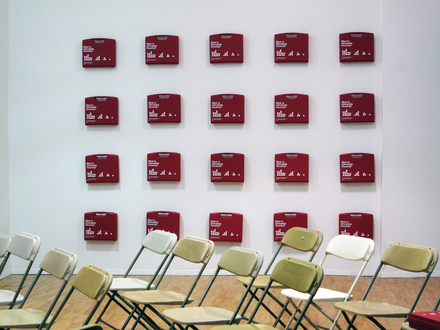TROPOLISM
Thursday, 4 March 2010
Wednesday, 3 March 2010
Building Buildings Out Of Photographs
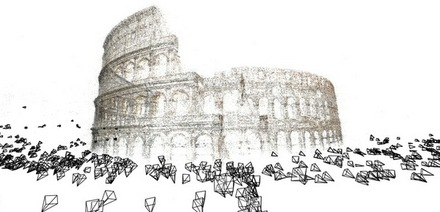 The folks at the University of Washington are on the cutting edge of creating models of buildings out of millions of internet based photographs. With the wittiest of titles, Building Rome In A Day is a proof of concept that cities could be represented in computer models by using nothing more than the jillions of snapshots people take of places. They're not the only ones involved in this sort of thing, but we think they are the most interesting.
The folks at the University of Washington are on the cutting edge of creating models of buildings out of millions of internet based photographs. With the wittiest of titles, Building Rome In A Day is a proof of concept that cities could be represented in computer models by using nothing more than the jillions of snapshots people take of places. They're not the only ones involved in this sort of thing, but we think they are the most interesting.So far they've created some sparse point cloud models and simple mesh models. nothing ready for Iron Man 3 quite yet, but give it time. We think the possibilities of this are very exciting. Imagine fluid, dynamic models of cities changing based on internet photography and videos. Cities could be captured and backed up. You could experience a city of the past. A street from your childhood. Whole new film and game narratives arise.
Check back in a few on this one.
Wednesday, 13 January 2010
Denver Art Museum: The Castle And The Bower
Works: the basic premise. Instead of being a classic big, sprawling, flat, three-level supermall of art, like the Metropolitain Museum in New York, Ponti stacked the museum in a seven-story castle-like structure. Every floor is devoted to one area of specialty, which made it like entering a special realm devoted to that area. For collections that are not as strong in Eastern Seaboard museums, like American Indian Art, Western American Art, or Spanish Colonial Art, this effect of specialness is pronounced. What are usually the leftovers in museums with powerful Renaissance Painting collections are here the primary reason to visit. While the arrangement sacrifices some curatorial connections between periods and cultures by this separation, for this museum and the particular collections it specializes in, it works.
Works, sometimes: the castle idea. The building looks like a castle, and against the snowy mountains surrounding Denver, the conceit really works. I personally think it looks cool: it's straight out of Domus 1956. Not cool is the fact that there is a large concrete fence around most of the museum. It's not very friendly to many of its street faces.
Works, mostly: the windows. Because a lot of natural light is not desired, Ponti only cuts the building here and there to let little slivers of views and light to enter the exhibition areas. Again, for this particular collection, the presence of a direct window out, as small as they are, works. But barely: for painting collections, and many artifact collections, the windows are a curatorial problem. But for many of the collection areas (see above) the connection to the outdoors, and particularly to views of the Rocky Mountains, is welcome and desired. This museum is brilliant in its success in continually sequestering you for art viewing, and then giving you little moments of looking at outdoors which is totally not an art moment. Art Mall Fatigue is not a problem in this museum, a strength not shared by almost every other museum I've been to. Another powerful piece to this experience is that the main stairwell between floors is a concrete shaft with colored tiles. Yet to get to this shaft you leave the museum, go into a small outdoor space, and then go into the stair. The stair itself is rather brutal, but the experience of leaving the warm museum and going into the (usually) cold Colorado air is unique to most museum experiences.
Doesn't work: the materials and finishes. The thing looks a tad dated. The colored glass tiles on the exterior and in the stairwells scream 70s Italy, but I don't mind. It's the dusty florescent lighting, some worn exhibition displays and carpeting, and a strangely mismatched furniture collection that needs some help.
Doesn't work: the whole entry sequence. There's a cute little stair/overlook thing going on connecting the first three floors, but it's accessed through an empty exhibition room which is around the corner from the main entrance. Some of this is because the entry sequence has been reworked by the addition to this building.
Next we get to The Bower next door to The Castle, namely Daniel Libskind's addition. It's a lot of shards thrown together and the interior is shards and angled walls. You know the drill, no need to visit it really. However Leibskind's building is easy to get to, works well with its surroundings, and looks great on the outside. Inside, the spaces are a tad disorienting and at times annoying. Even the signage is tilty. RADICAL. It is saved by a powerful installation of contemporary art, but that is more of a compensation than a utilization. Ponti's windows are nothing short of subversive interruptions to the normally smooth consumption of art, and the technique is like an alternating current: on, then off, then on, then off. Libskind's building seems to just be a crazy-space way of framing art consumption, and it feels flat. It comes across like two people shouting at the same time. It's not as satisfying a solution because it does not seem to offer anything to the art except a pain in the ass.
On the other hand, the two together work really well, and Libskind's addition of course must be seen in this context. He's solved the biggest shortcoming of Ponti's museum: its presence in the city. The DAM is now cool again, and it's because it's composed of two buildings by design powerhouses.
Olafur's Skateboard
Tuesday, 12 January 2010
Contractor Follies
As part of our Arquitecto ou Engenheiro? Que? Series, we bring you Contractor Follies from the United States, where everything (and anything) goes when it comes to home contracting. Dare to dream, DIY contractors! If you are prepared to laugh, click on the slideshow for all the captions.
Monday, 11 January 2010
Bodega Down Bronx Gets A Home
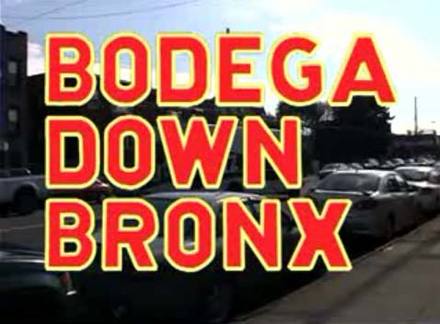 In case you missed it the first time around: run, don't walk, to Design Observer, because for a short time they are hosting Tropolism favorite film Bodega Down Bronx. The film is being hosted there in advance of its wider release next month by The Center For Urban Pedagogy, which produced the film.
In case you missed it the first time around: run, don't walk, to Design Observer, because for a short time they are hosting Tropolism favorite film Bodega Down Bronx. The film is being hosted there in advance of its wider release next month by The Center For Urban Pedagogy, which produced the film.
Wednesday, 30 December 2009
Tropolism Books: The Function Of Form
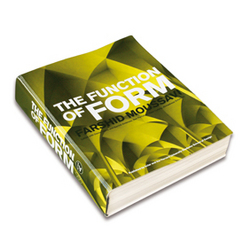 Title: The Function Of Form
Title: The Function Of Form
Author: Farshid Moussavi
Publication Date: Autumn 2009
Publisher: Actar
ISBN: 978-84-96954-73-1
Look, it's no secret I love Spanish architecture book publishers. Just look at my bookshelf: El Croquis (issues 49-69, baby!), Quaderns (193-203) and the awesome Documentos De Arquitectura series published by the Colegio de Arquitectos de Almeria (issues 17 and 32, if anyone can get me an issue 11 in this series drop me a line). That leaves out the new stuff, like the amazing and exhaustively detailed surveys from a+t. So it should come as no surprise that I love everything Actar has sent me, particularly their new title The Function Of Form, by Farshid Moussavi.
Rarely do we get books by practicing architects that are not about that architect's practice. Or if we do, it will be a book of poems or (shiver) watercolors. Yet here is one that is thoughful, useful, and only incidentally related to Ms. Moussavi's practice. Yet it is about architecture. The book is ostensibly a survey of distinct structural spanning systems, all of which contain repetitive structural members and variations on their arrangement, scale, or shape. I mean, Foreign Office Architects is of course interested in these specific kinds of structural systems, yet the book hardly favors any particular system. Instead, it illustrates the incredible variety and breadth of structural innovation that has happened over the last century or so. If one were to organize the book chronologically, I get the sense that one would find one chapter of pre-20th Century structural systems, one chapter of 20th Century, and one chapter of 21st Century.
Another powerful choice was having all the systems illustrated well, and in exactly the same way. This filter allows us to see that the innovations of Guarini in his SS. Sindone Chapel of 1667 are just as relevant today as they were in the Baroque era. And fans of ancient Arabic architects, rejoice: the immense contributions of this group to dome technology is no longer overlooked.
Most importantly, this book encapsulates our current era's structural concerns and obsessions as succinctly as John Borrego's Space Grid Structures did in 1968. While the latter boiled down the discussion of spaceframe structures into the real concern of the 60s (awesome grid structures everywhere!) by giving us a few pages of scaleless elements and diagrid paper, The Function Of Form ends each section of the book with miniature axonometrics which collect all the previously surveyed systems on one sheet. The effect is clear: tessellation rules.
Support this site by purchasing The Function Of Form here.
Thursday, 3 December 2009
Bike Party To Celebrate Bike Law
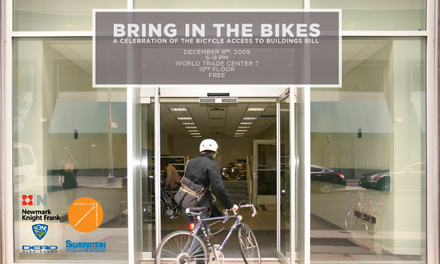 Bring In The Bikes is a party on December 8 to celebrate the passing of Local Law 52, The Bicycle Access To Buildings Bill, which went into effect this month.
Bring In The Bikes is a party on December 8 to celebrate the passing of Local Law 52, The Bicycle Access To Buildings Bill, which went into effect this month.The bill requires buildings with freight elevators to allow cyclists to bring their bikes into buildings, so they may securely park them in designated areas. With miles of bike paths installed all across the 5 boroughs over the last few years, this is the next logical step: connecting all the pieces that allow people to chuck carbon-causing transportation entirely and pedal it to work. And still having a bike at the end of the day because they didn't park it on the street.
The party is at 7WTC, another opportunity to check out this cool building, and the cost is free. RSVP if you'd like to attend.
